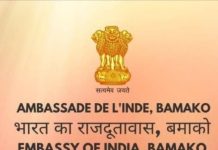Prime Minister Narendra Modi’s trip to Wuhan in China for an informal summit with Chinese President Xi Jinping came as a surprise to many. It was almost unthinkable to see him there just few months after a visit to the country and before another scheduled visit next month. The Prime Minister had visited the country in last September, just one month after the Doklam stand-off and he is again visiting the country in June for Shanghai Cooperation meeting. He should certainly be credited for introducing a change in the prevalent norms of diplomacy. But, this is hardly of any importance if it does not deliver some better results. The format of dialogue is not important, if anything is important, it is the content. Here, it is imperative to ask whether China is going to change its attitude towards India. The past behaviour hardly confirms.
It is not unusual for Indian media to have depicted the trip in an over enthusiastic manner only to land up in a situation where it lost the capacity of analysing the event with some objectivity. The trip had a huge potential of becoming a path-breaking mission. However, a careful glance at the reports in state-controlled media of China gives us an insight which points to the fact that India is not going to gain much from the trip. The course of dialogue between the two most important economies of Asia is also not going to benefit India in trade and business sectors. In terms of strategic gains, we are not going to gain anything. It is another thing that the message given out through the event may be of great propaganda value for both the governments. China wants to grab a leading role among Asian economies and it needs India to be by its side, even reluctantly, to show the world.
The hype created around the informal nature of the event was on the lines expected by the organisers, but, it was at the cost of common sense. If no agreement was to be signed and no joint communiqué to come out, what was the purpose of such a high-level summit? It may appear to be a smart way of diplomacy, but, in reality, it only indicates a near impossibility of getting to an agreement. The reports in Chinese media portrayed the event as an Indian initiative which China agreed to join. It also points to the fact that India showed every type of flexibility, whereas, Chinese remained firm and stuck to their earlier positions. India taking a lead or agreeing to join a high-level summit only after few months of the 72-day stand-off at Doklam itself points to an abnormal step taken by it. The stand-off only revealed that China has not changed a bit since the 1962 war between India and China. It chose to make all the derogatory remarks which are used against an enemy country. In the given situation, it was not surprising that the issue was not even mentioned in the talks. This might be due to the Chinese denial of making any change in its position on Doklam. The country has constantly been denying doing any wrong by “changing the status-quo at Doklam”. China says that territory belongs to Beijing, so there is no question of changing the status-quo. The agenda of the informal summit did have other contentious issues as well. Issues of declaring Jaish-e-Mohammad chief Masood Azhar a UN-designated terrorist and blocking India’s entry into Nuclear Supplier Group made it clear that China has not changed its stance on these issues.
The apprehension gets strengthened when we see the External Affairs Ministry saying that the leaders did not go into specifics. Invoking the arrangements made after the historic Rajiv-Deng Xiao Ping summit in 1988 and the decision of implementing them also points to the fact that there is no headway in talks on border disputes. China is not ready to abandon its position it has held since the Sino-Indian War in 1962. So, the only option left to the leaders was to issue “strategic guidance to their respective militaries to strengthen communication in order to build trust and mutual understanding and enhance predictability and effectiveness in the management of border affairs.”
The two leaders directed their militaries to earnestly implement various “confidence building measures agreed upon between the two sides, including the principle of mutual and equal security, and strengthen existing institutional arrangements and information sharing mechanisms to prevent incidents in border regions. They endorsed the work of the Special Representatives to find a fair, reasonable and mutually acceptable settlement on the boundary issue. These instructions to their militaries only give some assurance of a calm and tranquil at borders. However, Chinese are known for violating their commitments.
The fact that the issue of CPEC (China Pakistan Economic Corridor) and Belt and Road Initiative (BRI) traversing through Pakistan-occupied Indian area were shelved also goes in favour of China.
We get some insight only after looking at the interpretations made in the state-controlled Chinese media. It gives us what is going on in the mind of establishment in Beijing.
“It appears that India is changing its radical attitude toward China highlighted in Doklam standoff last year,” commented the government-controlled Global Times in China.
“Indian academia and political circles have agreed that the country needs to develop cooperative ties with China,” said the newspaper. The interpretation clearly indicates that China wants to project the Summit as an Indian initiative aimed at calming down its own aggressive positions on Doklam and other issues.
The concerns over CPEC have also been dismissed explicitly. The newspaper said, “India’s geostrategic concerns for the China-Pakistan Economic Corridor (CPEC) and other Chinese initiatives will persist. China has the right to cooperate with any other sovereign countries in the region, while India also has the right to like or dislike China’s initiatives in the region. But, the bright side is that, instead of focusing too much on the CPEC, China and India can better align their interests by staging out regional initiatives that are paralleled to the CPEC.” The newspaper suggests that India could participate in “China-Nepal-India Trilateral Corridor or revive the Bangladesh-China-India-Myanmar Corridor.”
The much-hyped trade relations also became captive of the stubborn Chinese attitude. Though India stressed the need of balancing the trade and discussed the scope of the possibilities of agricultural and pharmaceutical export to China, China does not seem to be inclined to accept such an arrangement which would enable India to bridge the gap in export and import earnings. China does not seem to be ready to make any concession. The newspaper argues how massive industrialisation has placed China in an advantageous position and it can facilitate ‘Make in India’ through its investments. The requisite, the newspaper enumerates is further liberalisation of Indian economy.
‘Later-comers’ trade deficit with their industrialisation facilitators are often large and will not decrease soon. This is because of the huge demands for necessary components and machinery those late-comers cannot produce onshore. So, instead of fixating on trade, India may better improve its balance of payment through financial account surplus in forms of incoming foreign direct investments. This, of course, requires India to put the existing trade deficit in strategic perspectives, further liberalising its domestic market,” said the Global Times.
That the summit was organised in a hurry and India failed to make China agree on concessions is clear. It will affect our status internationally. In recent years, Indian position has been of resisting China. This has inspired confidence among Southeast Asian Nations. India had taken a bold stance on South China Sea dispute as well. Chinese expansion has been so rapid that it has almost encircled India. Earlier, China used to have an only ally, Pakistan in the region. Now, it has spread its wings over the entire region. The most worrisome aspect is its expansion in the Indian Ocean. Maldives, once considered a trusted Indian ally, has also come under the Chinese influence. The present regime has been defying India time and again. The latest entrant to the Chinese fold is Nepal which has a long border and shared past with India.
According to defence experts, India has now left with the only option of relying on French and US naval powers and Australians to contain China in the Indian Ocean.
Will peace bought by Prime Minister Modi in Wuhan last long? The question is not easy to answer. The current strategic scenario points to the precarious condition of India. The only assuring stance Prime Minister Modi has come is in the form of his visit to Nepal. If the same gesture is extended to Pakistan, it would be easier for India to handle the dragon.
letters@tehelka.com













